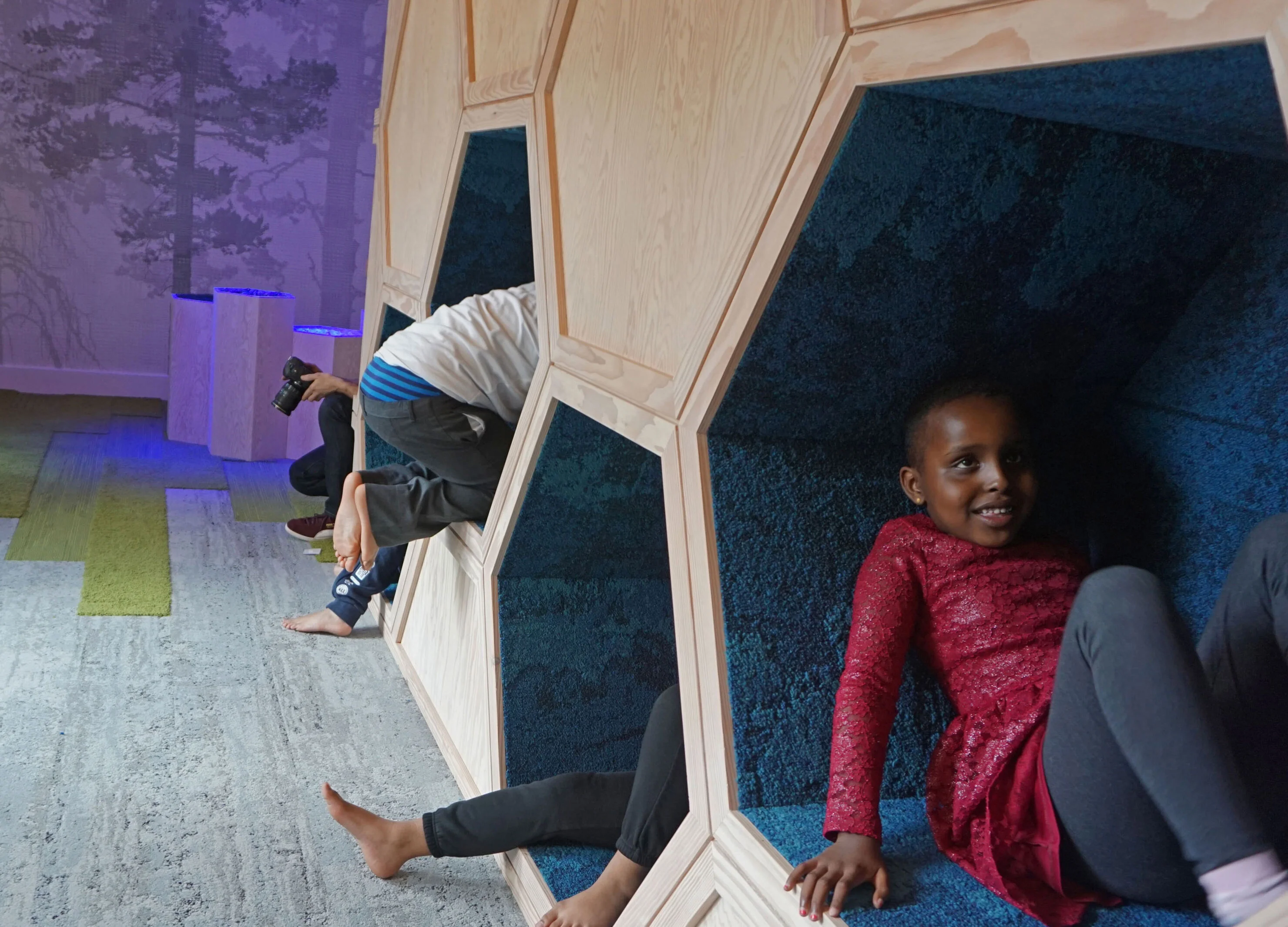
A Biophilic Design without Plants
Whilst trials have demonstrated that having plants in classrooms can lead to an improved performance, it is not always possible to incorporate them. This was certainly the case for The Garden School, where plants don’t withstand the physical interactions with the students.
However, where a direct experience of natural elements is not possible, mimicking nature and using natural analogues (such as natural textures, patterns, colours and images in floor and wall coverings) can positively impact perceptual and physiological stress responses. So, that was our biophilic approach to this project.
What we did...
The new space created with our knowledge partners Interface, Inc. is inspired by elements of nature and is somewhere the children can play, relax and feel safe away from the adjacent bustling playground.
Throughout the space, textured carpets with varying pile heights and wallpaper with images of a woodland provide tactile and visual references to nature. Visual references to natural forms and patterns are usually preferred and tactile stimulation can be used to reduce stress, to energize or to relax. This is particularly important for students with Special Educational Needs.
The nature based design includes 3 key aspects:
- Window seats to view the playground from, with a sense of prospect
- Hexagonal seating niches with a sense of retreat
- A “cause and effect” interactive feature to engage children with sounds and textures of nature

The Window Seat
Offering safe views onto the playground with an abundance of natural light.
This is an important consideration, as optimising exposure to daylight can have a positive impact on staff and students.

The Hexagonal Seating
This playful built-in seating also provides somewhere for children to relax and restore their physical and mental energy.
Carpeting inside the niches soften the noisy acoustics This can improve students’ concentration, attention and perception of safety.

The Interactive Feature
At the far end of the space is the multi-sensory feature that children can interact with, and control artificial lighting. When each of the natural surfaces are touched, the colours of the LED lighting discs above will change softly and natural sounds (e.g. leaves in the wind or waves on the seashore) will be triggered. Touching two surfaces will cause overlapping sounds and two sets of lights to be illuminated. The hexagonal plinths vary in height and are made from a natural wood, creating a material connection with nature that can decrease blood pressure and improve creative performance.
The colour changing LED lighting disks mimic natural tones we experience throughout the day, i.e. dawn, midday or dusk (yellows, oranges, reds, blues and purples). This can increase visual comfort and have a positive impact on circadian rhythm functioning which in turn can improve sleep patterns and reduce stress.
Get in touch...
Please do get in touch if you would like to discuss how we can work together to improve your education spaces.







